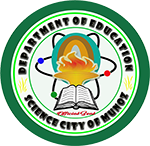Andrew M Pagaling
Curva Elementary School
Assessment implies an important role to someone’s learning. The new normal in education highly affects the evaluation of learners’ output which led the teachers to develop learning tasks such as Self-Learning Modules (SLMs), Localized Learning Activity Sheets (LAS), Learning Activity Logs (LALs), and Mastery Assessments to maintain quality education.
Hence, some outcomes view a confusing part while evaluating such tasks in the modular distance learning. Penmanship on written outputs, for example, is not that easy to assess if those are really the output of learners, and because of the modern technology, the learners or parents may edit or repair the unwanted videos or voice over via special effects in recorded performance outputs.
Teachers use the blended type of learning through different social media platforms and stakeholders in a time-to-time principle. They strategically initiate different ways to assess learning certainly, in line with giving a justifiable score, as well as intervention, remediation, and other matters that need to be done through assessment or evaluation.
Furthermore, distance learning has a great impact to the new normal setting in education. Teachers may also get anxious in determining learners’ progress or outcome. Moreover, teachers adapt this new setup in education amidst the pandemic.
Blended learning on the other hand provides convenience, speed, and is cost efficient to the parents, learners, and teachers (Dhull and Beniwal, 2019). It is because of the scenarios where parents do not need to give daily allowance to their children, and they do not need to go to school because of the health protocols.
Blended learning consists of utilizing different social media platforms naming SMS or text messaging, Facebook Page, Messenger, Group Chat (GC), video call, phone call, and the like. Through these platforms, it supports in determining the continuous learning whether the students really know his or her work. Teachers then monitor their students through these and ask questions to the parents to make sure their children really did the work. Another, providing intervention materials thru online and printed approach to those diagnosed challenged or identified frustrated and instructional learners are stimulated. This is to assure the quality education, among the students. Teachers also regularly monitor each learner by sending of video lessons or video clips. There is an online kumustuhan that provides instructional support to further help students in their tasks.
In addition, usually in a face-to-face learning, home visitation is necessary. Although the idea is unsafe, teachers initiate the visitation to make the students submit their module plus to give them learning kits. Teachers also teach them on lessons they find hard to answer. Because of the proper implementation of a blended learning approach, it is a pathway to evaluate the learners progress holistically.
Evaluating the learners’ progress may be a difficult task in this time of pandemic. Teachers must find methods and strategies to weigh if the lessons are inculcated to the learners and if there is a comprehension happened. Because of these initiatives and innovations, it may result to a more holistic and sufficient way of evaluation.
Teachers’ initiatives in evaluating the effectiveness of flexible learning in a modular distance learning vary in this new learning structure like different social media platforms with the use of SMS or text messaging to those who do not have access on the internet or data connection; and dissemination of information and reminders via Facebook Page, Facebook Messenger or Group Chat (GC) for the full blast and directed learning strategy to ensure proper subsequent of activities or tasks in a given situation or scenarios, video call or phone call on a one-on-one basis and ample time for tutorial to those challenged learners, averaged and even advanced learners.
In learners’ challenges on understanding and accomplishing activities in SLMs, LAS, and Mastery Assessments, teachers created video clips to explain the lessons explicitly and others provided more examples via video call in messenger and via phone call. Learners and parents worked together to understand and answer the SLMs, LAS, and Mastery Assessments to respond in the said assessment tools.
In assessing students’ learning, if the pupils can demonstrate the task, parents or learners were interviewed by the teachers via call; teachers encouraged honesty in answering their SLMs, LAS, and Mastery Assessments, and using different monitoring tools such as LAL, distribution and retrieval forms, communicating with stakeholders thru their purok leaders and other members of that particular group. Therefore, students’ learning was assessed based on the flexible learning modality. In addition, the learners’ morale was also boosted upon answering their activities.
Teachers, together with students, parents, and stakeholders must share a common goal to maintain the quality of education. It must be sustained to achieve the DepEd’s vision and mission even with any catastrophe that the world may bring. These initiatives will support the DepEd’s vision that is to make the learners “realize their full potential and contribute meaningfully to building the nation.”
